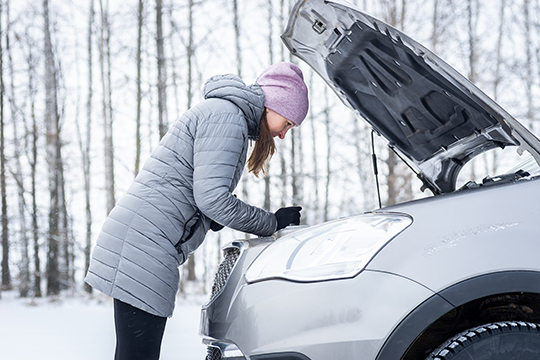What to Do if Your Car Breaks Down in the Snow: A Winter Survival Guide
Winter can be a magical season with its glistening snow and cozy nights by the fire. However, for drivers, it also presents unique challenges, particularly the fear of breaking down in the snow. The frigid temperatures and slippery roads can make a bad situation even worse. To help you navigate this potentially dangerous scenario, Meineke in Lancaster prepared a winter survival guide on what to do if your car breaks down in the snow.
- Stay Calm and Assess the Situation. The first and most important thing to do when your car breaks down in the snow is to remain calm. Panicking won't help the situation. Take a deep breath and assess your surroundings. Are you in a safe location, such as the side of the road or a parking lot? If not, try to move your vehicle to a safer spot, but be cautious when doing so.
- Turn on Hazard Lights. Make your car as visible as possible to other drivers. Turn on your hazard lights to alert them to your presence. In reduced visibility due to falling snow, fog, or darkness, this can be a lifesaver.
- Call for Help. Your next step is to call for assistance. Contact a tow service, your roadside assistance provider, or a trusted friend or family member. Let them know your exact location and the nature of the problem.
- Stay Inside Your Vehicle. In extremely cold weather, your vehicle can provide much-needed shelter. As you wait for help to arrive, keep your doors locked, windows cracked slightly for ventilation, and the engine turned off to conserve fuel. Use blankets or extra clothing to stay warm and conserve energy. It's also a good idea to periodically run the engine for 10-15 minutes every hour to keep warm and prevent carbon monoxide buildup.
- Prepare an Emergency Kit. Before winter sets in, assemble an emergency kit for your vehicle. Having these items on hand can make a significant difference if you're stranded for an extended period. This kit should include items such as:
- Blankets or sleeping bags
- Extra winter clothing, including gloves, hats, and socks
- Non-perishable snacks and water
- Flashlight and extra batteries
- Ice scraper and snow brush
- Jumper cables
- Flares or reflective triangles
- Shovel
- First aid kit
- Kitty litter or sand (for traction)
- Clear Snow and Ice. While waiting for help, make sure your exhaust pipe is clear of snow and ice to prevent carbon monoxide poisoning. You can also use a shovel, kitty litter, or sand to create traction if you need to get your vehicle moving.
- Be Wary of Strangers. It's essential to be cautious when dealing with strangers who offer assistance. While many people genuinely want to help, some may have less honorable intentions. It's best to keep your doors locked and windows rolled up unless you're confident in the person offering help. If you're uncomfortable, you can always wait for professional assistance.
Breaking down in the snow can be a stressful and potentially dangerous situation. However, with the right knowledge and preparation, you can increase your chances of staying safe and getting the help you need. The Washington Post wrote a helpful article called: "Driving in the snow? What to do if your car gets stuck in a winter storm". Check it out for more information on how you can stay safe this winter.
Remember to stay calm, call for assistance, and make use of your emergency kit. Your safety is our top priority at Meineke.
If Lancaster is inconvenient, you can get the same top-quality service at any of the other 12 Meineke Car Care Centers in South Central Pennsylvania.
MEINEKE CAR CARE | LOCAL CAR CARE | LOCAL MECHANIC | NEW FREEDOM CAR CARE | NEW FREEDOM AUTO CARE | CAR CARE NEAR ME | OIL CHANGE NEAR ME | ASE CERTIFIED
#MEINEKECARCARE #LOCALCARCARE #NewFreedomCarCare #NewFreedomAUTOCARE #CarCareNearMe #MeinekeCares #Meineke #OilChangeNearMe #OilChange #ASEcertified


